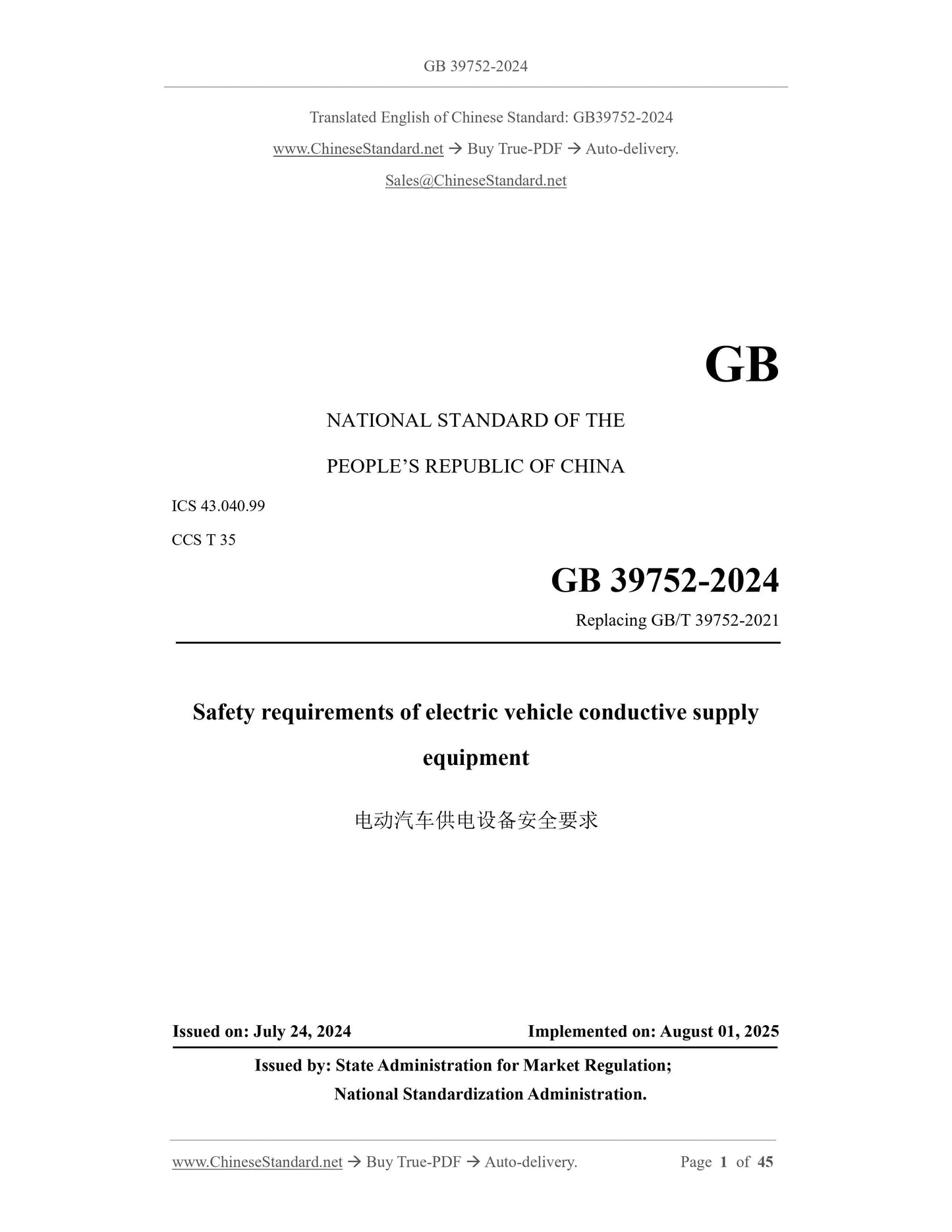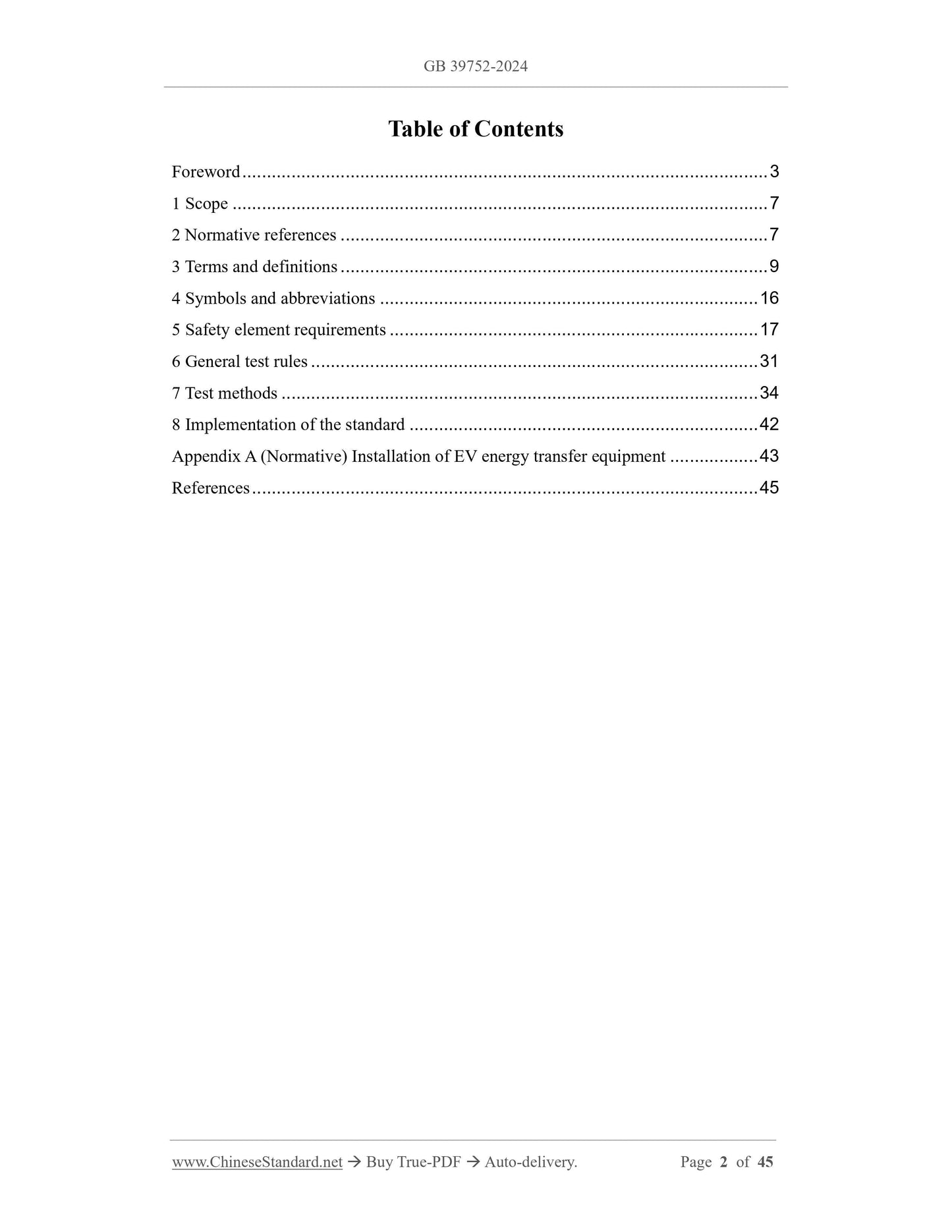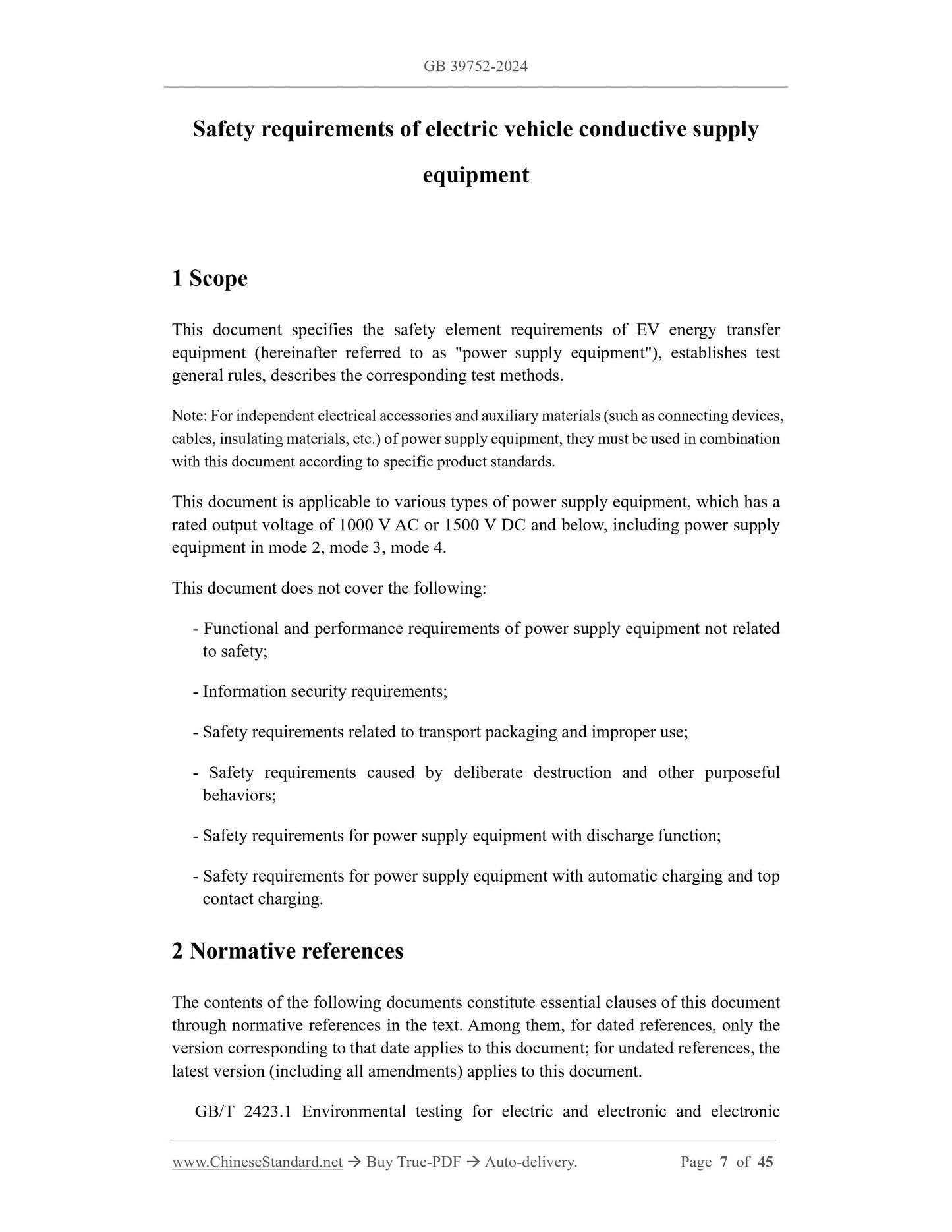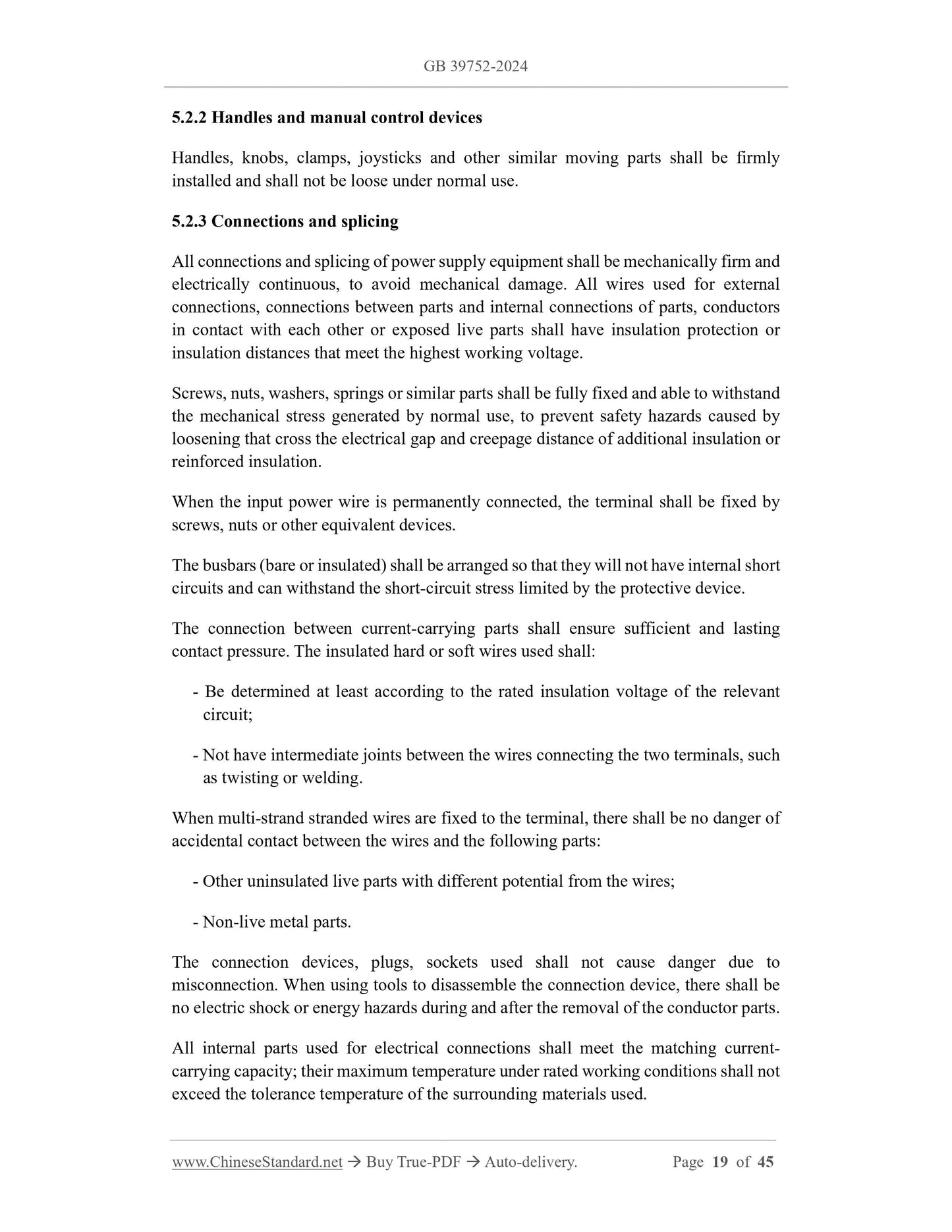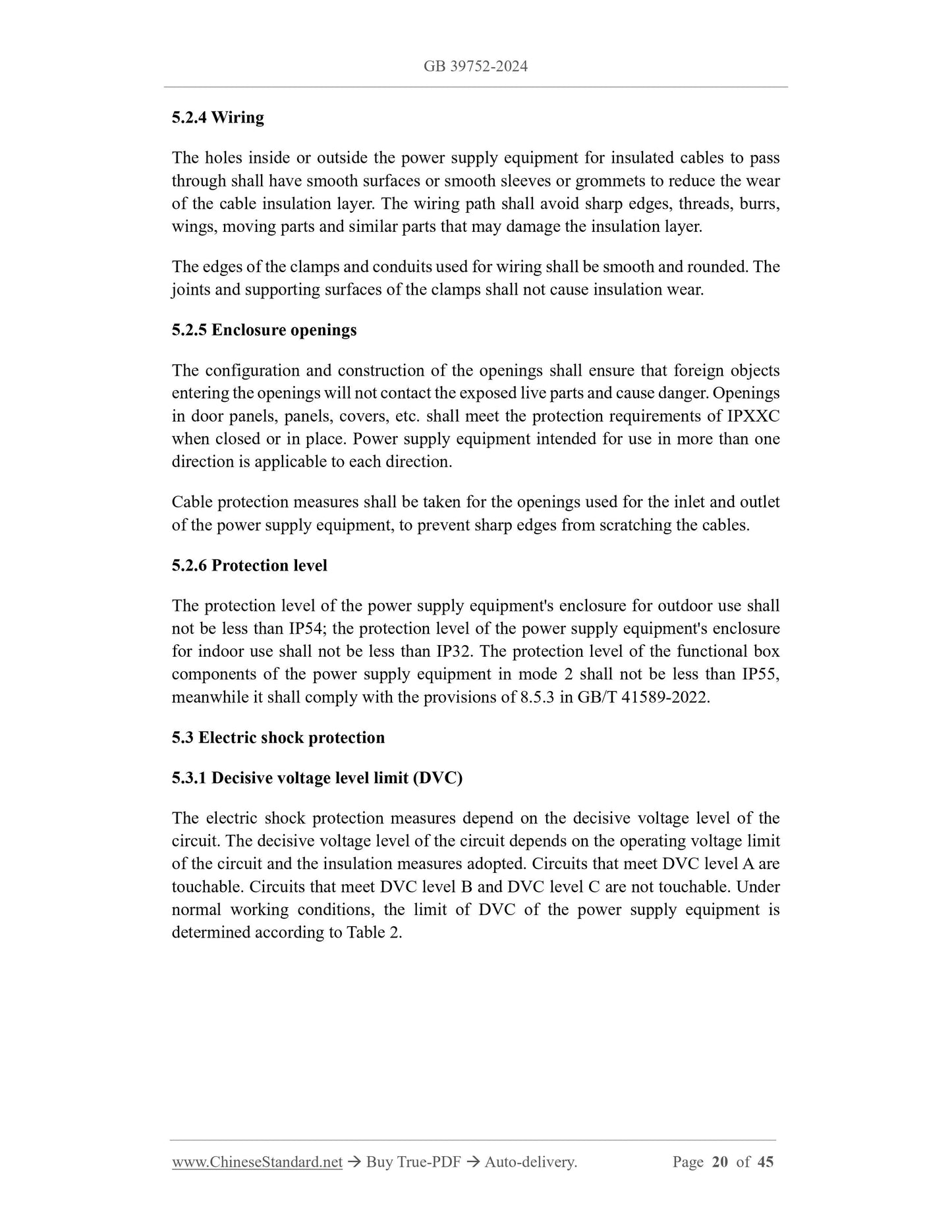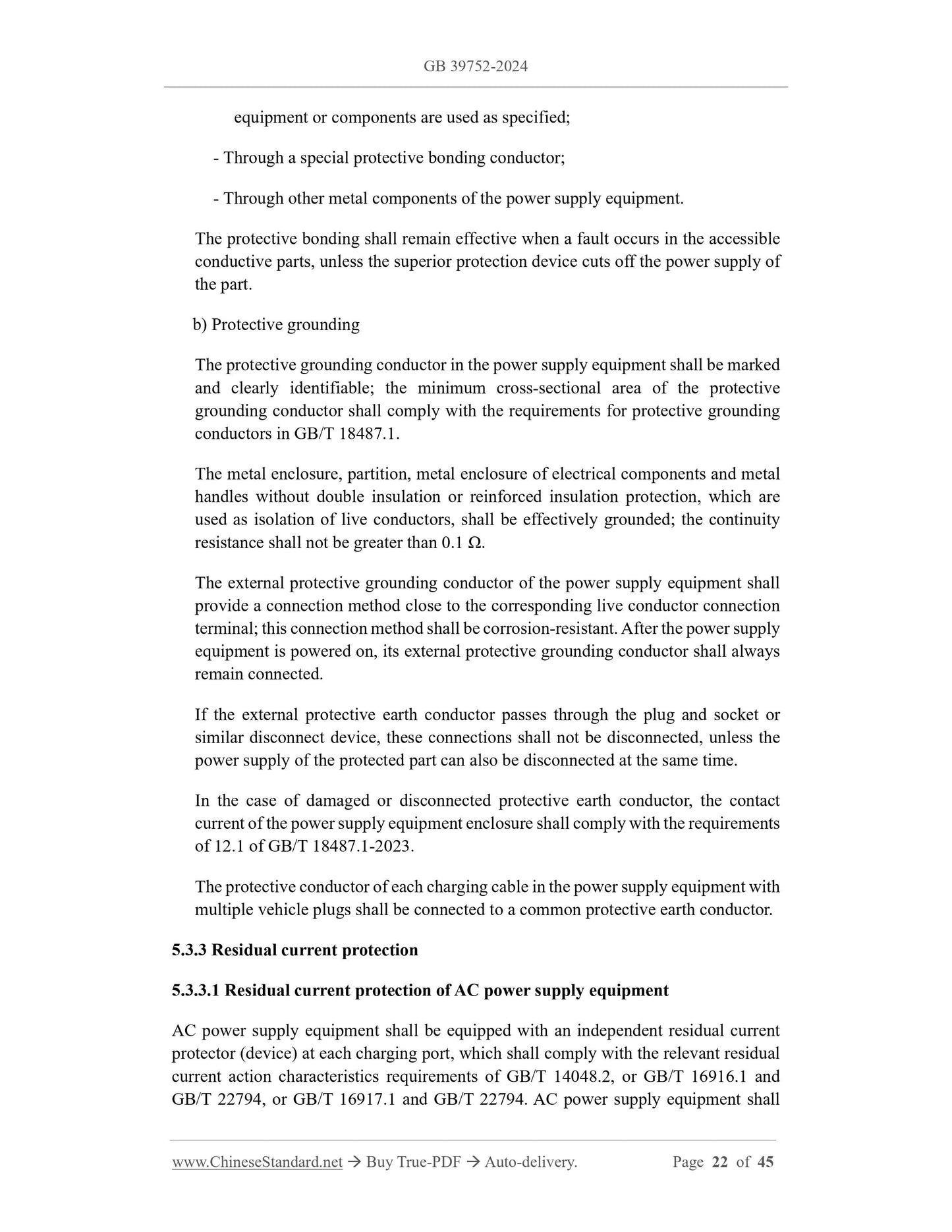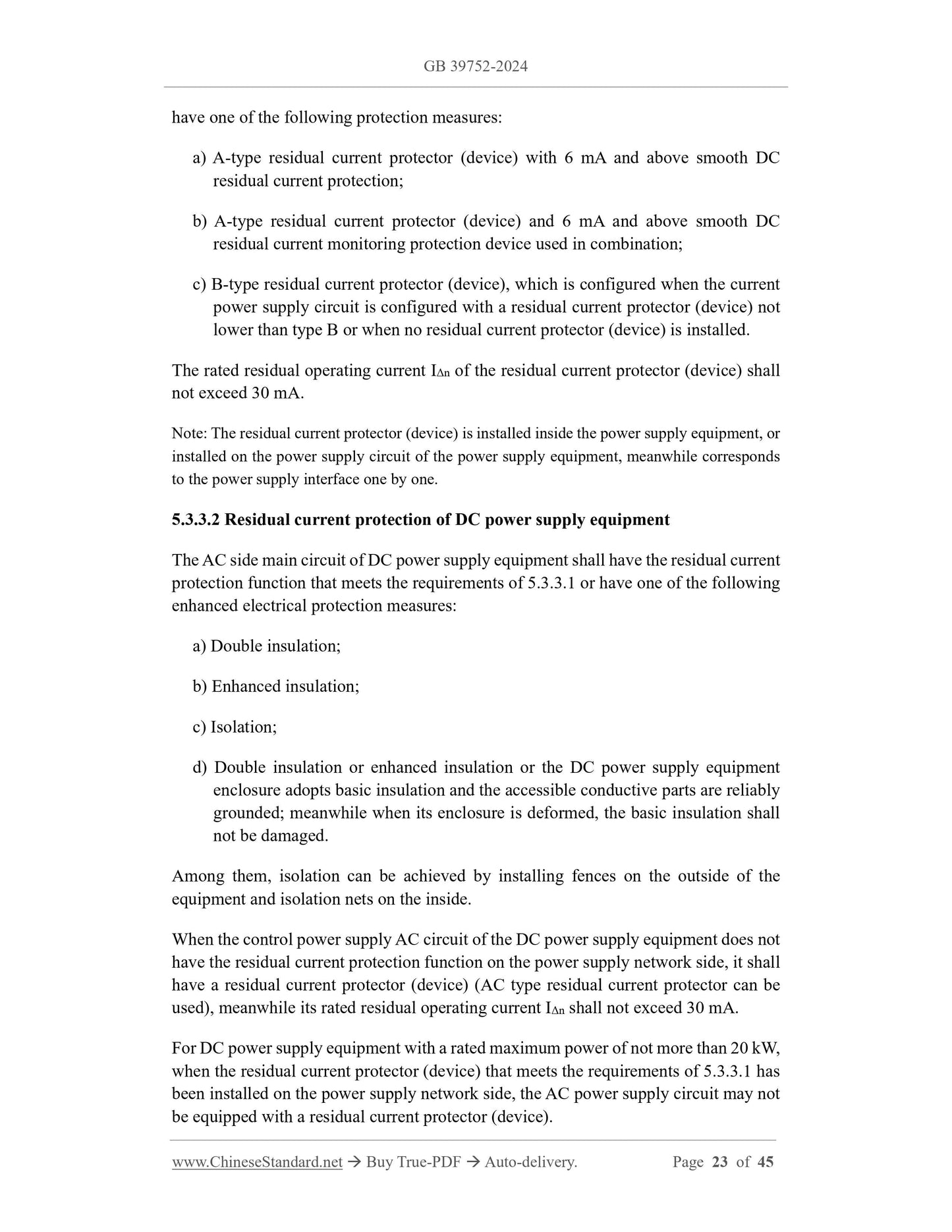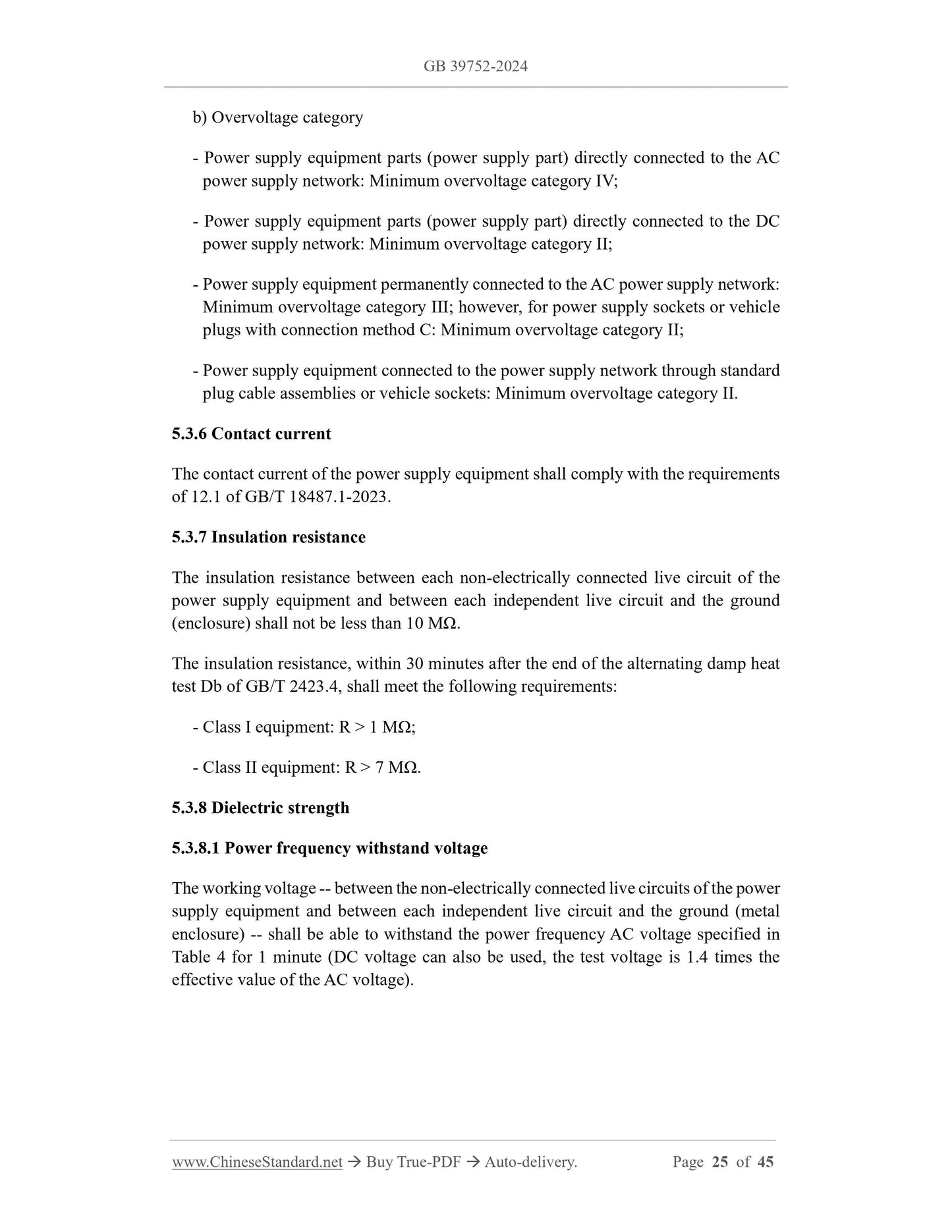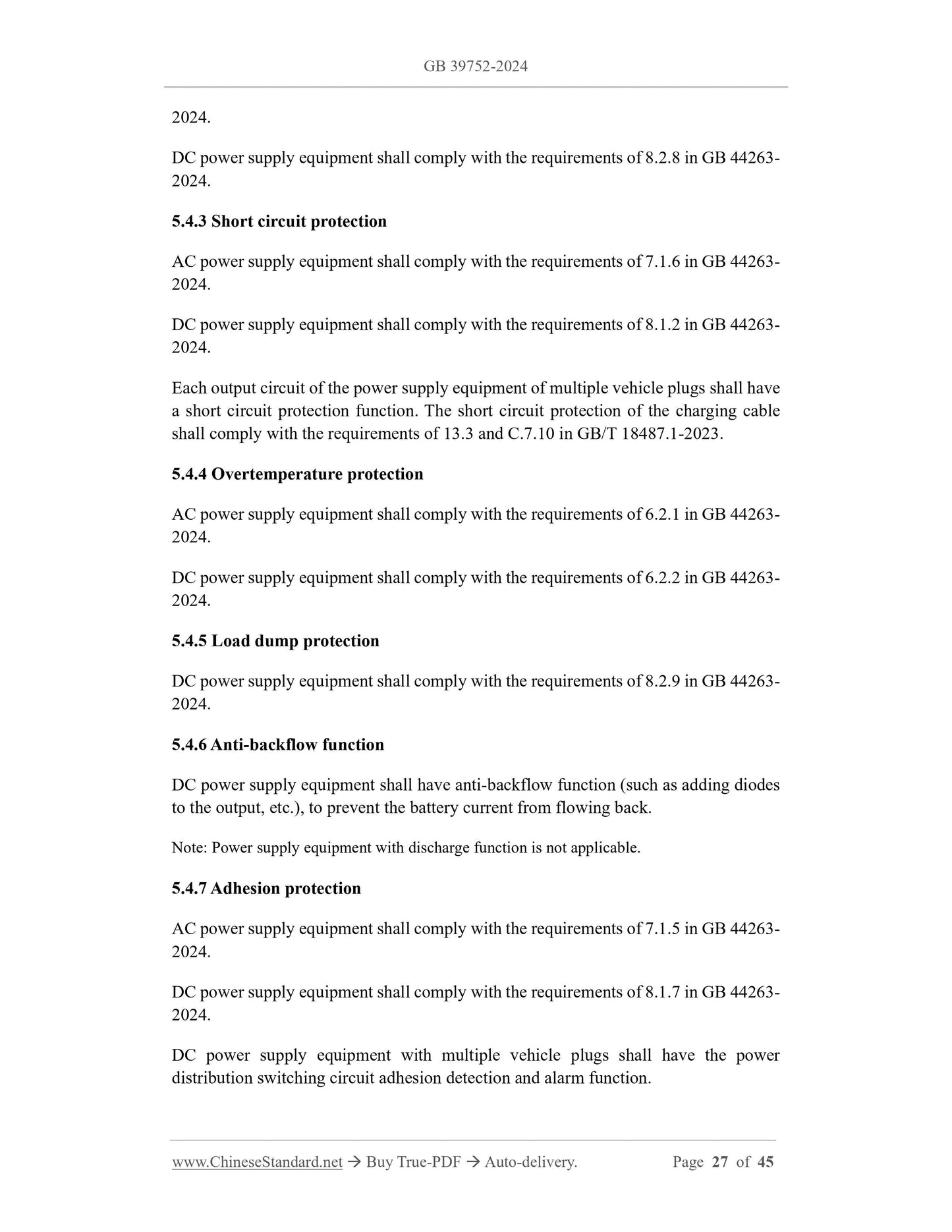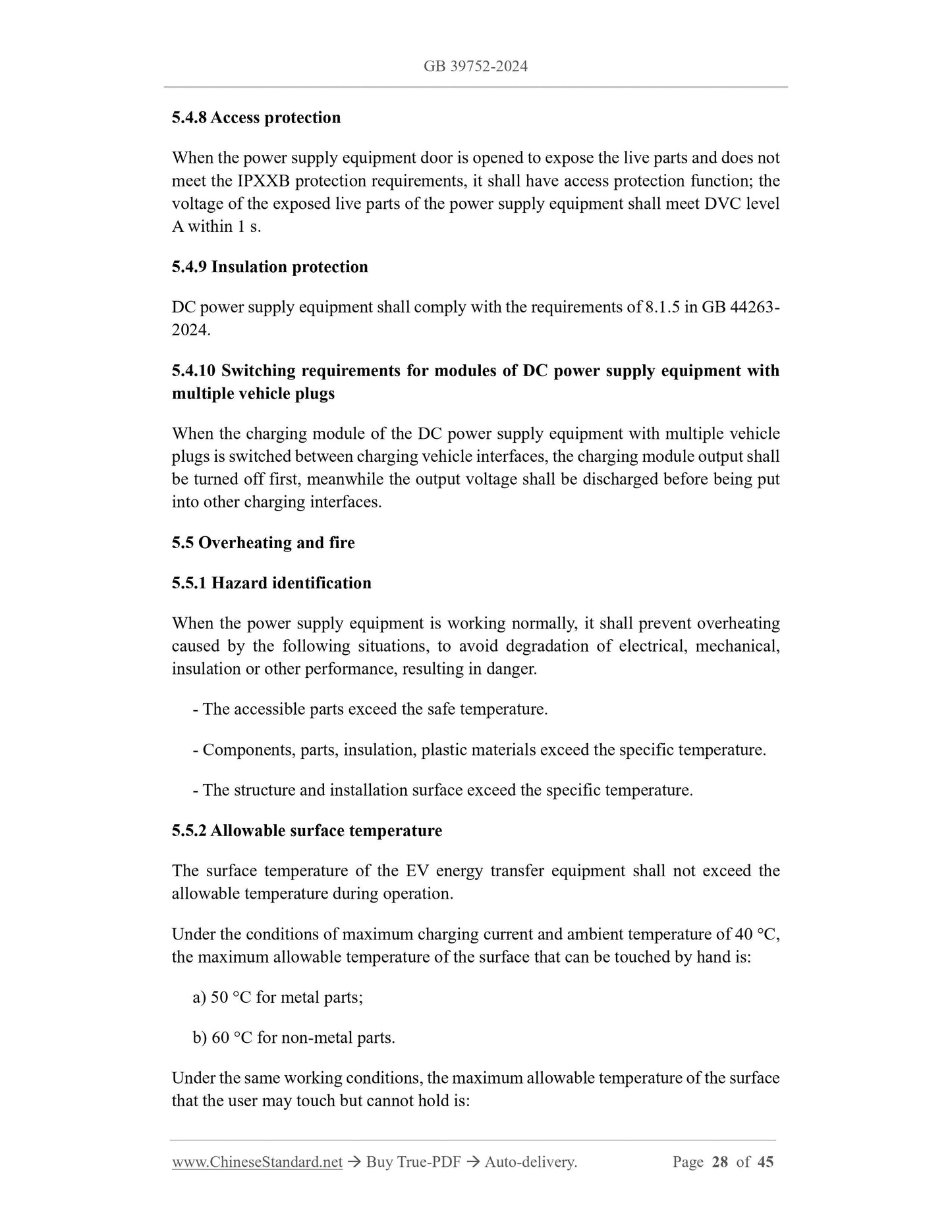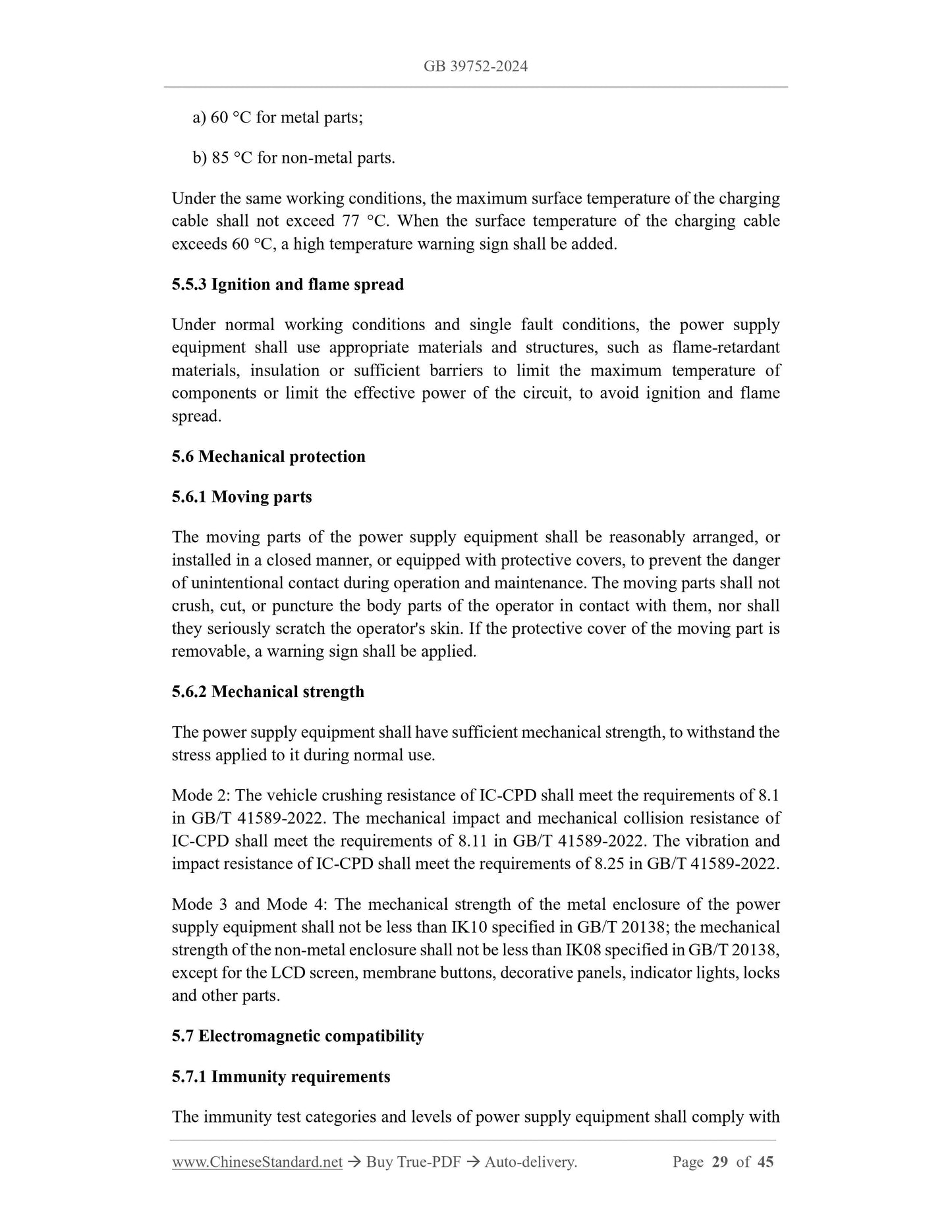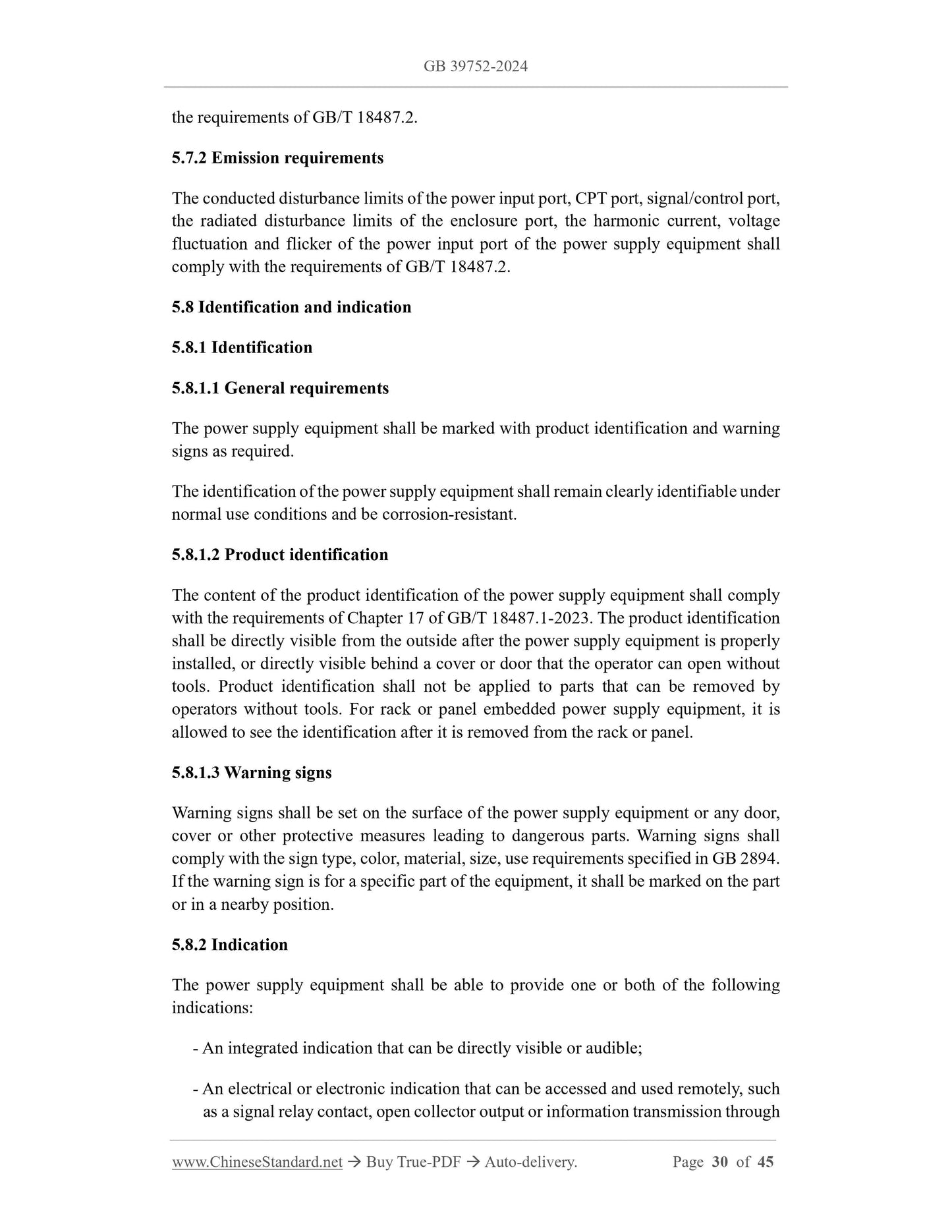1
/
of
12
www.ChineseStandard.us -- Field Test Asia Pte. Ltd.
GB 39752-2024 English PDF
GB 39752-2024 English PDF
Regular price
$575.00
Regular price
Sale price
$575.00
Unit price
/
per
Shipping calculated at checkout.
Couldn't load pickup availability
GB 39752-2024: Safety requirements of electric vehicle conductive supply equipment
Delivery: 9 seconds. Download (and Email) true-PDF + Invoice.Get Quotation: Click GB 39752-2024 (Self-service in 1-minute)
Newer / historical versions: GB 39752-2024
Preview True-PDF
Scope
This document specifies the safety element requirements of EV energy transferequipment (hereinafter referred to as "power supply equipment"), establishes test
general rules, describes the corresponding test methods.
Note. For independent electrical accessories and auxiliary materials (such as connecting devices,
cables, insulating materials, etc.) of power supply equipment, they must be used in combination
with this document according to specific product standards.
This document is applicable to various types of power supply equipment, which has a
rated output voltage of 1000 V AC or 1500 V DC and below, including power supply
equipment in mode 2, mode 3, mode 4.
This document does not cover the following.
- Functional and performance requirements of power supply equipment not related
to safety;
- Information security requirements;
- Safety requirements related to transport packaging and improper use;
- Safety requirements caused by deliberate destruction and other purposeful
behaviors;
- Safety requirements for power supply equipment with discharge function;
- Safety requirements for power supply equipment with automatic charging and top
contact charging.
Basic Data
| Standard ID | GB 39752-2024 (GB39752-2024) |
| Description (Translated English) | Safety requirements of electric vehicle conductive supply equipment |
| Sector / Industry | National Standard |
| Classification of Chinese Standard | T35 |
| Classification of International Standard | 43.040.99 |
| Word Count Estimation | 30,312 |
| Date of Issue | 2024-07-24 |
| Date of Implementation | 2025-08-01 |
| Older Standard (superseded by this standard) | GB/T 39752-2021 |
| Issuing agency(ies) | State Administration for Market Regulation, China National Standardization Administration |
Share
